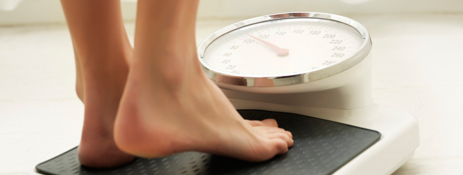REDUCTION OF BODY MASS – REACHING THE OPTIMUM BODY COMPOSITION
One of the basic principles in reduction of body mass is increase in daily discharge of energy. According to the recommendation of WHO (World Health Organization), each individual should make 10 000 steps a day to enable its normal functioning.
FEEL LIFE FITNESS CLUB has several electric and mechanical treadmills, training devices, bicycles, row ergometers, steppers and devices which clients can use for moderate but long-lasting activity which is the only right way to reduction of body mass.
Healthy living means commitment to healthy diet. Each of us should have nutrition charts which show how much carbohydrates, protein and fat are contained in each foodstuff.
To reduce body mass, the following steps should be taken:
- determine value of basal metabolism
- calculate daily use of calories ( include all sorts of activities like physical activities, studying, reading, etc.)
- calculate nutrition value of daily food intake
- calculate daily consumption of liquid
It is essential to look at reduction as the daily consumption of energy vs. daily discharge of energy ratio, that is to say, if monthly discharge is bigger than monthly consumption, the total body mass goes down.
While choosing foodstuff and composing meals, the following suggestions could be useful:
- Choose foodstuffs with high nutrition and low energetic value (milk, meat, vegetables, fruit, cereal)
- milk and dairy products contain much protein but often also fat, so you should choose low-fat milk, sour milk products and cottage cheese.
- Choose meager meat (chicken, fish, turkey, beef) done without oil (roast or boiled)
- Fruit and vegetables contain quantities of vitamins and minerals, have low energetic value and high satiety index because they contain dietary fiber
- Grains and wheat contain high level of vitamins, minerals and dietary fiber (wholemeal bread, beans, oatmeal, etc.)
- Consumption of liquid must be high (spring water, coffee. Tea without sweeteners
- Limit the use of salt
- Cut down on margarine, butter and cooking oil
- Avoid alcohol for its high energetic and low nutrition value ( 1 g of alcohol contains about 7 kcal)
- Recommended daily allowance is 2 dl of red or white wine (it stimulates cardio-respiratory system)
- Take multiple small meals (5-6 meals) during the day because it contributes to satiety.
- Take snacks between breakfast and lunch, lunch and dinner (fruit, dry fruit, multivitamin drinks)
- Do not let yourself feel thirsty, because it means your organism has already dehydrated, consume liquids often.
- DO NOT CONSUME: sweets, fast food (pizzas, hot dogs, crisps, condiments), bakery products, white bread and carbonated drinks.
download nutrition chart here



